TX033 米海軍のUAV活用例
最初のドキュメントは、UAVの活用とは関係ありませんが、海自が米海軍との合同訓練で頑張っているの取り上げました。通信技術(日米のヘリコプター間での偵察、探索情報の共有、ミッションケーパビリティの共有等)のインテグレーション機能の充実に、海自が追い付いてきたという安心感が嬉しいですね。
HSM-51 and VX-51 of the Japan Maritime Self-Defense Force (JMSDF) carried their first joint training exercise on September 14. A MH-60R Seahawk from HSM-51 and an SH-60K from VX-51 flew a Tactical Formation (TACFORM) flight, and a dual helicopter Anti-Submarine Warfare (ASW) tracking exercise over the Philippine Sea.
U.S. Navy and JMSDF Helicopter Squadrons Conduct Bi-lateral Exercises 12 October 2021
From Mass Communication Specialist 3rd Class Askia Collins
フィリピン沖 ヘリコプター海上打撃飛行隊(HSM)51の「ウォーロード」と海上自衛隊航空開発飛行隊(VX)51の「マイティー59」の飛行士が、9月14日に二国間演習を行いました。HSM-51に所属するMH-60RシーホークとVX-51に所属するSH-60Kが、2機の飛行隊による戦術フォーメーション(TACFORM)飛行と、2機のヘリコプターによる対潜水艦戦(ASW)追跡訓練を実施しました。これは、HSM-51とVX-51が一緒に飛行する初めてのASWイベントでした。
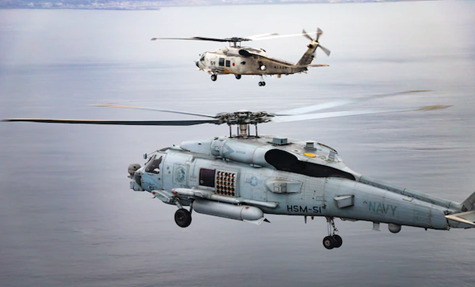
「HSM-51パイロットのクリス・アペル中尉は、「海上自衛隊と行った演習では、日米間の統合が十分に可能であることを実証しました。「これにより、日米両国が共に直面する可能性のある将来の課題に立ち向かうための準備が整うと信じている」と述べています。
The cooperative flight was flown over the Philippine Sea off the coast of Japan. The two squadrons practiced safety of flight formation maneuvers and ASW tactics. The exercises promoted increased collaboration between Commander, 7th Fleet assets and their JMSDF hosts.
“We were able to improve our joint operational skills through this event.” Said Lt. j.g. Jumpei Yoshimura, a VX-51 pilot. “We are looking forward to flying the next event with the U.S. Navy.”
HSM-51 is forward-deployed to Naval Air Facility Atsugi and embarks aboard multiple ships in the U.S. Navy’s 7th Fleet Area of Operations.
VX-51 is a squadron in the Fleet Air Force of the JMSDF based in Atsugi, Japan.
U.S. 7th Fleet conducts forward-deployed naval operations in support of U.S. national interests in the Indo-Pacific area of operations. As the U.S. Navy’s largest forward-deployed fleet, 7th Fleet interacts with 35 other maritime nations to build partnerships that foster maritime security, promote stability, and prevent conflict.
さて、ここからは本題のUAV活用が必須となってきている防衛戦略の行方を検索する為の好材料という視点で、下記のVanilla社と米海軍の取り組み記事を紹介します。
Small drone biz Vanilla Unmanned has big plans for the US Navy
Vanilla Unmanned has big plans for the US Navy | Vanilla Unmanned
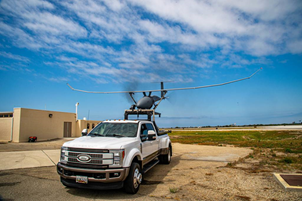
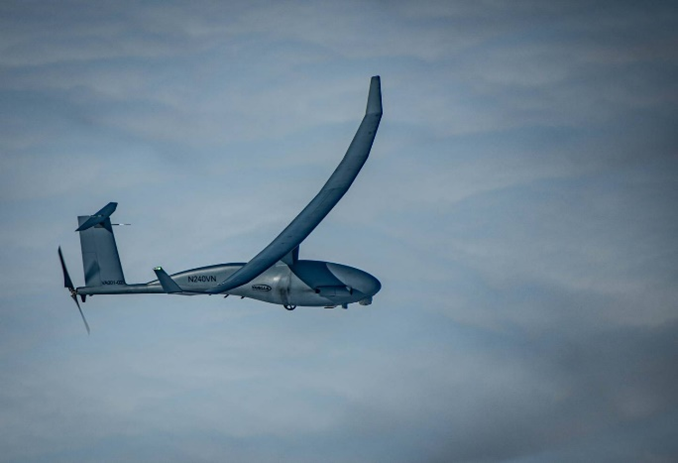
When U.S. Pacific Fleet conducted its first exercise focused on manned-unmanned teaming in April, some familiar systems showed up: the distinctive silhouettes of a Zumwalt-class destroyer, an Independence-variant littoral combat ship and an unmanned Sea Hunter in the water, plus a Navy variant of the Air Force’s MQ-9 Reaper drone in the air.
But a newcomer — with an equally eye-catching silhouette — also played a big role in the event: the Vanilla ultralong-endurance UAV flew overhead, providing persistent video surveillance over the multiday event. It brought with it the intelligence-gathering capability of a drone with the firepower of a warship.
The Vanilla Unmanned business line is owned by Platform Aerospace, a small company located outside Naval Air Station Patuxent River in southern Maryland. While the Vanilla UAV was originally designed and built for the sole purpose of breaking world records — which it did, with a demonstrated five-plus-day flight in 2017 — Platform Aerospace wants to turn it into a must-have asset for the Navy and Marine Corps, as well as other domestic and industry buyers.
Militarizing Vanilla
Vanilla Unmanned highlights three features about its UAV: “world-record endurance, unmatched payload and then a disruptive cost profile,” Greg Pappianou, chief growth officer at Platform Aerospace, told Defense News during a May 24 visit to the Hollywood, Maryland, manufacturing site.
The drone is marketed as being capable of 10 days of flight with 30 pounds of internally stored payloads, or several days of flight with up to 150 pounds of internal and external payloads in a multimission heavy-lift mode. Those specifications well exceed both the endurance and the payload capacity of its peers in Group 3, Pappianou said, referring to classes of unmanned aerial systems. (Group 3 UAS weigh less than 1,320 pounds and fly at less than 250 knots, according to the Pentagon.)
All this comes at less than $2 million per system, not including the payload, he said. That puts it in the cost range of attritable systems — reusable, but inexpensive enough to lose in battle — that the U.S. military has sought in recent years.
The company is already working with military customers, including the Office of Naval Research, U.S. Southern Command and U.S. Special Operations Command. The Navy seems more interested in maximizing endurance, while SOCOM wants to maximize payload capacity, Pappianou said.
“If you start with a seven- to 10-day airplane, you’ve got a lot of freedom there to put stuff on,” Tim Heely, the senior vice president for strategy and a retired Navy rear admiral, told Defense News during the visit.
The company’s chief technology officer, Dan Edwards, said the aircraft was designed around endurance. “And then our goal when we missionize it is maintain that endurance. So anybody that comes with a payload, we kind of have this fun little dance of: How do we integrate it with the least impact to the endurance?” he said during the visit. “It’s fun when you start with that much endurance. How much of it you can give away for some crazy integration?”
Pappianou noted that the 10-day max endurance fundamentally changes the calculus for how the Navy would employ it. For example, the service could set up a station in Sigonella, Italy, for launching and recovering the vehicles and to conduct maintenance between flights. From Sigonella — a location with an established supply chain and no danger-pay requirements for contractors — the Navy could have days of aerial coverage across Africa, Europe, the Eastern Mediterranean and the Middle East.
In another example, Pappianou said the UAV could operate out of Guam and still get five days of persistent coverage of the Luzon Strait between the Philippines and Taiwan. To get the same coverage from a larger and more expensive Group 4 UAS, he added, the Navy would need 13 sorties to achieve five full days of surveillance — that’s more than double the flight hours for a contractor-operated service that the Navy buys by the flight hour — plus more manpower to support more launches and recoveries, and added risk each time a drone hands off the mission to another air vehicle.
A company graphic depicts the drone supporting anti-submarine warfare patrols in the North Atlantic from Washington, D.C., with almost four days on station for the mission. It also shows the aircraft conducting early warning signals intelligence flights near North Korea from Guam, with five and a half days on station. And the drone is depicted on a counterterrorism mission providing intelligence, surveillance and reconnaissance over Afghanistan from Diego Garcia in the India Ocean, with four and a half days on station.
Ahead of the Pacific Fleet’s Unmanned Integrated Battle Problem exercise, the company brought the UAV to Edwards Air Force Base for a test run in February, where it flew for 73.5 hours while continuously passing video from its electro-optical/infrared camera, and maintaining command and control through a satellite connection. Pappianou said that duration was the equivalent of flying from Edwards AFB outside Los Angeles, California, to Reykjavik, Iceland, in a single flight.
The flight during April’s exercise lasted about 45 hours. Vanilla Unmanned’s leadership said they’ve analyzed flight data and the remaining fuel supply after each recent flight, and the data consistently supports the possibility of conducting flights of seven to 10 days, even if they’ve only demonstrated five days in the ultralong-endurance mode and three days in the heavy-payload mode.
In July, the company will send two of its four aircraft to Key West, Florida, for a maritime patrol mission with radar and EO/IR cameras in a U.S. Southern Command demonstration. Then in November, one of the drones will go to the Arctic Circle to demonstrate a mission for NASA using technology that can measure ice and snow depths. In a climate-controlled trailer outside Platform Aerospace’s integration facility — formerly a condemned warehouse that the company bought and renovated when it got into the ISR drone business a couple years ago — one of the UAVs sits in frigid conditions to ensure it can withstand the Arctic winter it’s about to face.
Variants and swarms
Platform Aerospace isn’t trying to compete with the MQ-9 Reaper, which the Air Force has moved away from, but in which the Navy and Marine Corps are increasingly interested as a land-based Group 5 UAS to support amphibious operations. Pappianou is pitching Vanilla UAS for the “boring” missions so services can use more costly drones for high-value operations.
With the Navy in mind, the company is developing a vertical-takeoff-and-landing variant that could operate from a ship at sea for about 24 hours with a 50-pound payload. That’s much less than the baseline variant but three times the endurance of similar products on the market, Pappianou said. The VTOL variant, which is funded through a project with Johns Hopkins University Applied Physics Laboratory, recently reached its critical design review and is set for testing in the first quarter of 2022.
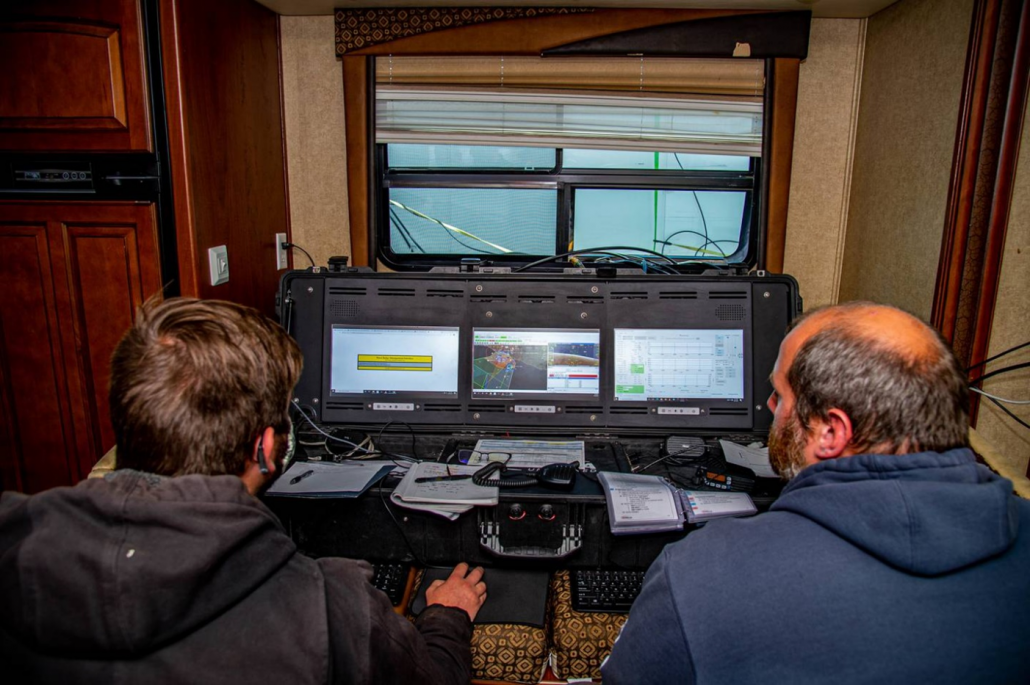
The company also hopes to fill a gap in the Marine Corps’ capabilities. The service had planned to acquire a VTOL Group 5 UAS that could operate from an amphibious ship at sea, but that effort was nixed in favor of acquiring land-based Group 5 UAS and supplementing them with smaller systems that could operate from ships. The Group 3 system the Marines used from amphibious ships, the RQ-21 Blackjack, is being cut as part of the service’s Force Design 2030 overhaul effort, and Vanilla Unmanned hopes to take its place.
Though Platform Aerospace bought the Vanilla Unmanned design to get into the military ISR sphere, it acknowledges a wealth of other uses for the ultralong-endurance aircraft.
“There’s probably not a week that goes by that we don’t get [a request for information] or take a phone call on something [in the civilian sector],” Pappianou said. “There’s a huge number of [Department of Homeland Security-], [Federal Emergency Management Agency-], Department of [the] Interior-type stuff, State [Department]-type stuff, and industry stuff, commercial inspections.
“It’s not something that we’re going full-tilt after, just because we have our hands full with the [defense] stuff, but I think it is exciting to think about in a couple years when this is more mature and at scale.”
Future opportunities could include disaster response for the government and insurance companies, Heely said.
Platform Aerospace also has two other projects gaining traction. The company is working with the Office of Naval Research on the CICADA swarming micro-UAV program, which involves CD-sized gliders that can be dropped by the thousands. The CICADA swarm can either inundate an area with jamming and other electromagnetic warfare payloads, or it could be scattered across a remote area to lay in wait and report back sounds or vibrations.
One thousand of these small gliders were dropped during a 2020 test event, the company said.
The firm is also pursuing, with the help of L3Harris Technologies, a roll-on/roll-off C-130 modification kit called Matrix. With the push of a button, the system can deploy a sensor ball from the airplane midair, and operators can monitor the sensor’s data and conduct missions from consoles bolted into the back of the plane. The gear can quickly be unbolted and removed to return the C-130 to its cargo transport mission.
‘The valley of death is real’
The recent manned-unmanned drill gave the small team at Platform Aerospace a chance to play with some bigger names in the drone market, but the company’s leadership isn’t declaring success just yet.
“The valley of death is real. We’re in it — we’re almost out of it, but we’re in it,” Pappianou said, referring to the transition from a research program to an acquisition program, where promising technologies can linger and then disappear from military budgets and priorities.
“If you were to look at our map of contracts right now, it’s kind of like cats and dogs for smaller amounts: Some are outcome-based, some are different structures,” he said. “The problem with that is, first of all … it is a little bit like death by a thousand cuts, if you think about the administrative side of the house for that. You’ve got all the monthly status reports for all these little cats and dogs. To actually have one of our sponsors say, ‘OK, here is a multiyear, well-funded program that includes that overseas demonstration, work out any final sensor integration bugs and then actually transition into operations’ — that’s the goal.”
Heely, who in his final Navy assignment was the program executive officer overseeing unmanned and strike aviation platforms, said small companies have a harder time than the big prime contractors because they’re financially on the hook for each mistake and setback, fighting for a contract and money instead of receiving funds from the start of the development process.
Vanilla Unmanned has an incentive to move quickly now that it’s completed its first successful Navy demonstration. “It’s our own money, a bunch of it, to make this work. So we can’t really waste time,” Heely said.
He acknowledged the service has done more in recent years to engage small businesses, but ultimately there’s still no single contract that will get Vanilla Unmanned out of the valley and into some kind of Navy or Marine Corps acquisition effort.
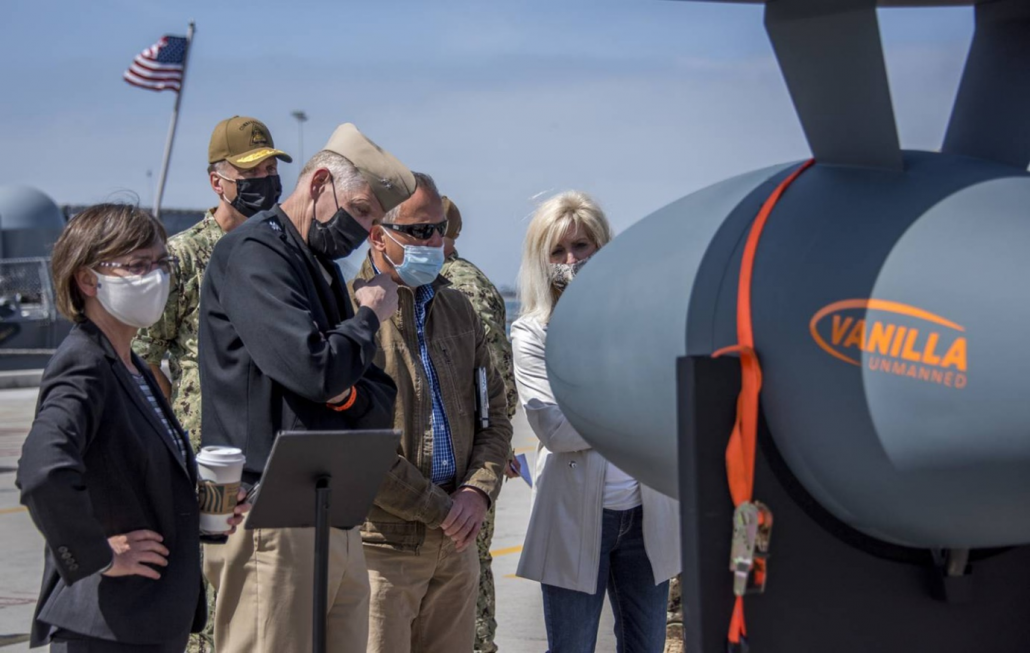
That kind of contract would be a significant departure to how Platform Aerospace has worked for the past 27 years, said CEO Kurt Parsons. The company’s original mission was to do one-off aircraft integration work. For example, a defense contractor would want to prove a new payload can work on its platform, so it would pay Platform Aerospace to perform engineering, manufacturing and modification work, and then acquire flight clearances. The company still does this, with about half of its 80 employees working on aircraft modification and the other half working on Vanilla Unmanned.
Parsons said the company was helping other contractors develop ISR aircraft for the military, but he wanted to get more directly involved. When Heely suggested partnering with the original Vanilla Unmanned designers a couple years ago, the time seemed right to jump into the market, Parsons said.
“It already held world records,” he added. “We just went in and said: ‘Let’s enhance it, make it mission-capable and then advance the technology.’ ”
Best regards,
Shoichi Sugiyama, Ph.D.

